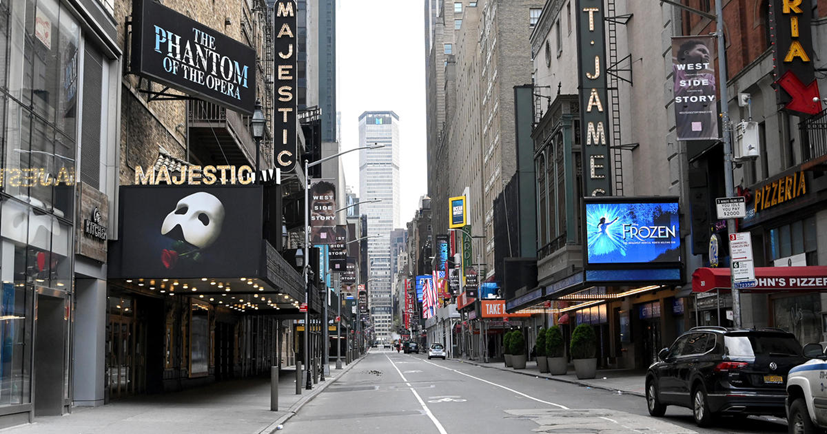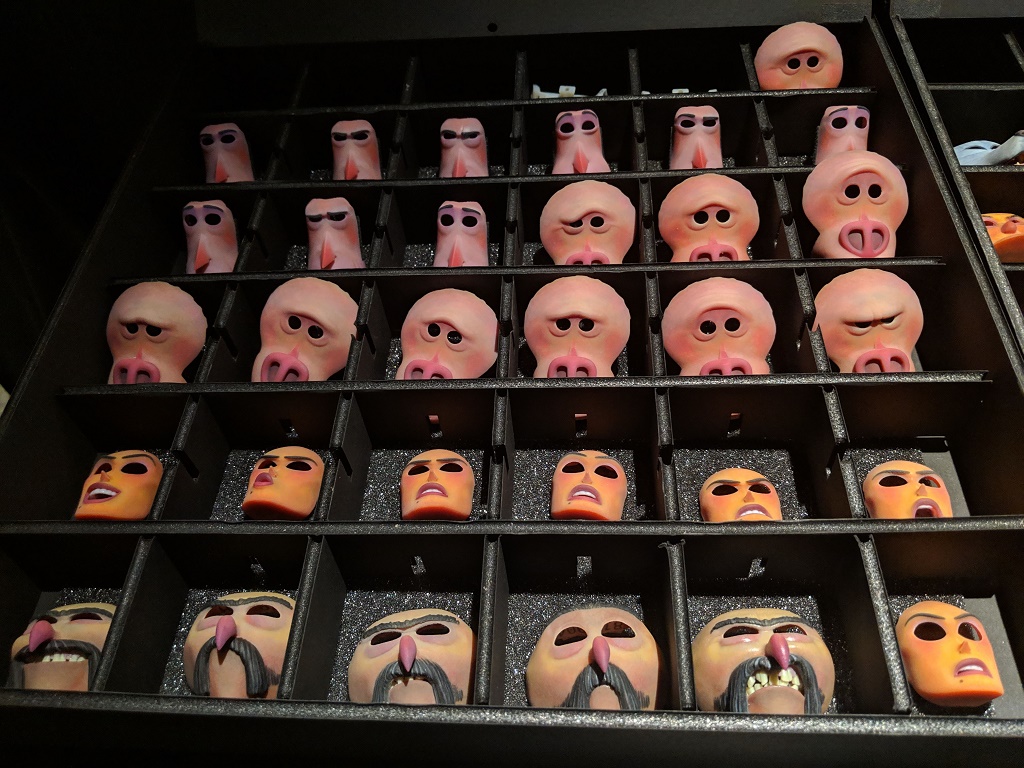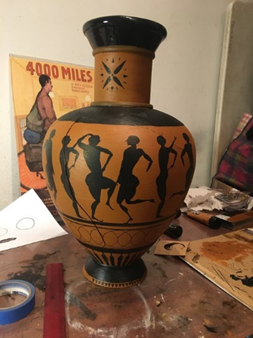
Charles R. Goulding and Harry Foxman dig into how 3D printing can reinvigorate the reawakening entertainment industry.
Lights! Camera! No Action. In 2020, the COVID-19 pandemic brought the film and television industries to a virtual stop. With movie theaters being closed and physical working restrictions, many studios’ projects were delayed or cancelled. The post-pandemic world will be a great opportunity for studios to rebound after a harsh 2020.
The pandemic may have served as a catalyst in the power shift of the industries. In May 2021, Discovery Media and WarnerMedia merged to create Warner Bros. Discovery. This $43 billion deal is one of many key partnerships of content and adds to an arms race amongst major media players in the post pandemic world. The major companies included under this large media umbrella are HBO, Warner Brothers studio, CNN, TNT, TBS, and Cartoon Network. Another major move that happened recently within the industry involved Amazon reaching a deal to buy MGM studios for $8.45 billion. MGM’s catalog contains over 4,000 films and 17,000 TV shows. This massive change in content ownership to Amazon Studios greatly shifts the power balance of the media industry.
Although the film and television industries are increasingly utilizing computer generated imagery (CGI) to produce their movies, 3D printed props are becoming more and more common throughout the industry.
New York City Resurgence
Throughout the past year, the New York City film industry has experienced drastic change. In the months leading up to the pandemic, the industry was at an all-time high in terms of number of productions and revenue. It was estimated that productions generated around $60 billion in economic activity and $3 billion in tax revenue, while employing over 100,000 people.
In May of 2019, there were 306 productions shot in New York City. That number dropped to 0 in May of 2020. In 2021, the May production count was up to 176 as restrictions and regulations were basically nonexistent. Many existing film studios have ramped up production, as well as new studios are opening up. Wildflower Studios LTD, co-owned by actor Robert De Niro, has just received approval to begin development a new $400 million film studio complex in Astoria, Queens.
Along with the film industry, Broadway and its musicals were completely shut down for months. This aspect of the shutdown drastically affected the booming tourism industry in the city. Putting on a production takes a lot of preparation, so even though most restrictions are lifted, most Broadway shows will not be back until mid-September.
The use of 3D printing will help Broadway and New York production get back on track.
Benefits of 3D Printed Props
There are many films over the past decade that have utilized 3D printing for set, prop, and costume design. The explosion of the science fiction and fantasy genres have greatly increased the utilization of 3D printing.
Movie studios need to develop fantastic and realistic-looking costumes to match their futuristic and other worldly characters and stories. Manually building these props is often less cost efficient than 3D printing and fails to deliver the precision and detail that audiences now come to expect. In the past, studios could get away with less precise and even lazy costume and prop design. Nowadays, people anticipate movies and shows to be as lifelike as possible. With 3D printing, film studious have no excuse for the props and costumes to look anything but real.
Along with the realistic aspect of utilizing 3D printing in prop making, speed is another large bonus. Movie and show productions often run on a time schedule that can be slowed down by several different variables including prop delays. If they do not like the look of a prop, or it gets damaged somehow, the special effects department could simply iterate their model and reproduce the piece in a matter of hours instead of days. Additionally, not needing to have physical iterations of props on hand helps with spatial constraints. For example, a studio based in Hollywood, California could be shooting a movie in New Zealand. If they need a prop to be fixed or adjusted, a team in California could redesign it in CAD and send the digital files to be 3D printed in New Zealand.
Examples of 3D Printed Props
There are a wide variety of movies recently that have used 3D printing as a major proportion of their set and prop designs, with more to certainly come in the future.
Disney’s Marvel Studios has grown rapidly over the past 15 years. With over 25 movies and television shows produced in that time, they have had their hands full. Because every project of theirs involves something other-worldly and futuristic, 3D printing is utilized to create a lot of the items that are infeasible to be built by hand and could not be created with CGI. In Iron Man 2 (2010), Marvel and Legacy Effects collaborated to 3D print the entirety of Robert Downey Jr.’s Iron Man suit. This costume was digitally modeled, printed in pieces, and painted. In Avengers: Infinity War (2018), Thor’s hammer was 3D printed in 34 pieces that were sized perfectly to Chris Harmsworth’s dimensions.

The movie studio LAIKA, based in Portland, Oregon, has become famous for utilizing 3D printing in its stop-motion animation studio. The studio is best known for films like Coraline, ParaNorman, The Boxtrolls, Kubo and the Two Strings, and Missing Link. These movies would involve 3D printing characters in different positions and facial expressions, taking pictures of them, combining the pictures together, and adding voiceovers. From the 2009 movie Coraline, 20,000 different heads were 3D printed. In ParaNorman (2012), 40,000 head were printed. Those numbers increased for The Boxtrolls (2014), Kubo and the Two Strings (2016), and Missing Link (2019) to 56,000, 64,000, 106,000, respectively. It is not a coincidence that as time went on and 3D printing became more efficient and widespread LAIKA was able to produce more and more 3D printed heads. If these movie characters and sets were made by hand instead of 3D printed, these films would have taken much longer to create, cost a lot more, and would be a lesser quality.
3D printing is also used on Broadway to create prop and set designs. Head Over Heels The Musical, performed at the Hudson Theatre on Broadway, used 3D printing in some of its prop and set designs. There is a scene in the musical that involves a vase full of flowers falling and breaking into pieces. It would be infeasible and expensive to have a new vase for every show. With the help of CUG Labs, the musical digitally designed a vase in pieces. Those pieces were 3D printed and the edges were magnetized, so it could break easily in the same pattern and be easily put back together.
Movie studios and other prop making companies involved in 3D printing may be eligible for the Research & Development Tax Credit.
The Research & Development Tax Credit
The now permanent Research and Development (R&D) Tax Credit is available for companies developing new or improved products, processes and/or software. Eligible costs include U.S.-based employee wages, cost of supplies consumed in the R&D process, cost of pre-production testing, contract research expenses, and certain costs associated with developing a patent. As of 2016, eligible startup businesses can use the R&D Tax Credit against $250,000 per year in payroll taxes.
3D printing can help boost a company’s R&D Tax Credits. Wages for technical employees creating, testing and revising 3D printed prototypes can be included as a percentage of eligible time spent for the R&D Tax Credit. Similarly, when used as a method of improving a process, time spent integrating 3D printing hardware and software counts as an eligible activity. Lastly, when used for modeling and preproduction, the costs of filaments consumed during the development process may also be recovered.
Whether it is used for creating and testing prototypes or for final production, 3D printing is a great indicator that R&D Credit eligible activities are taking place. Companies implementing this technology at any point should consider taking advantage of R&D Tax Credits.
Conclusion
The move and television industries are rapidly changing in a myriad of ways. Large companies are merging and buying different studios. The way audiences consume the media is much different now as well. Movies that used to be seen in theaters and television shows that were on cable TV can now all be streamed from the comfort of the viewer’s home. It is only natural that the way movies are made also changes. 3D printing and CGI are transforming the industries and making the process faster, cheaper, and higher quality.

